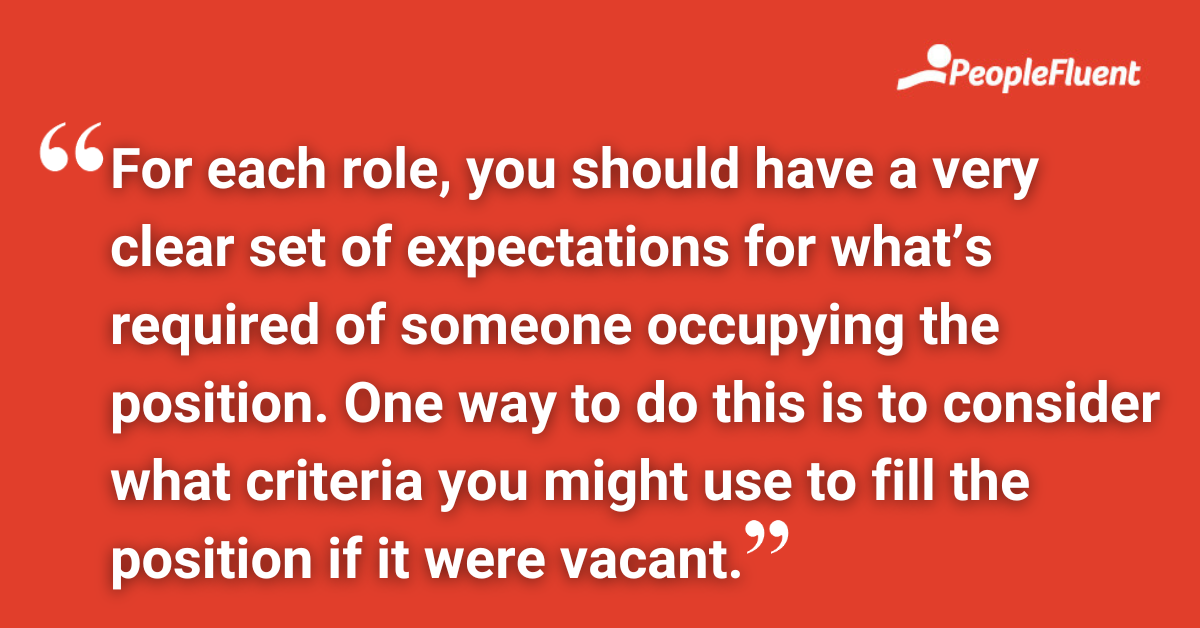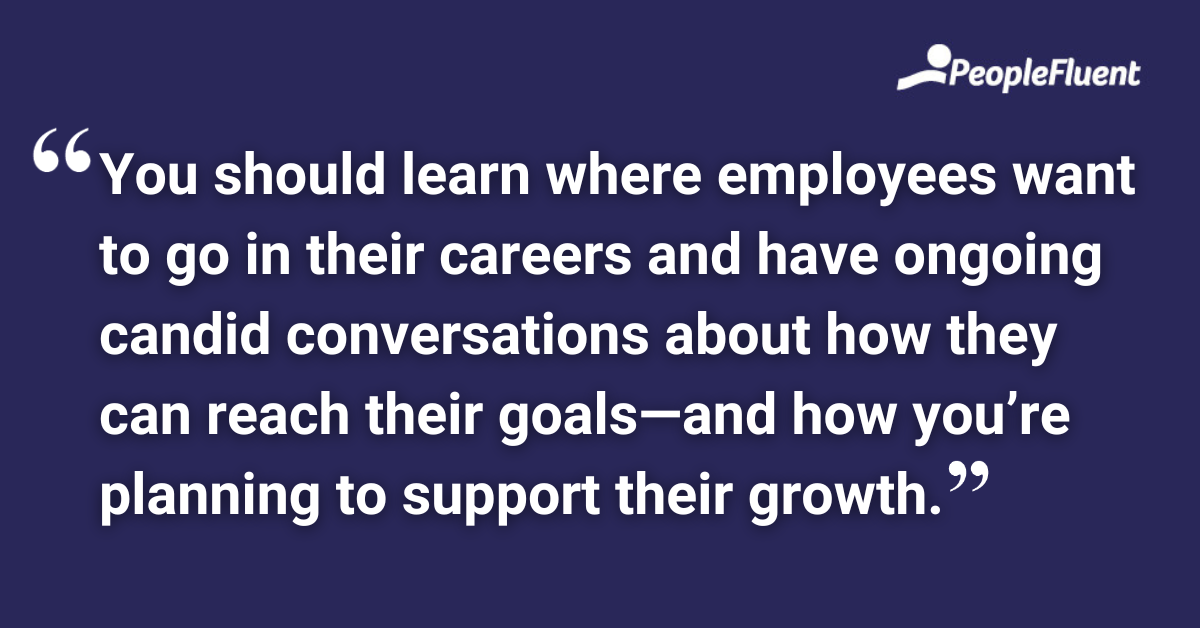Published: Aug 31, 2022Time to read: 8mins Category: Talent Management
6 Steps to Kick-Start Your Succession Planning
If you’re reading this, you’re probably already aware that succession planning is an essential process for any organization. After all, identifying where your talent lies within your organization and developing those individuals for future roles in your company is likely to reduce turnover. It’s also a way for your organization to boost morale and improve its overall culture.
Planning the future of your organization is a huge undertaking, so where do you start? Each situation is unique, and there’s no one way to go about succession planning. That said, there are some guidelines that everyone can follow to ensure your organization is getting off to the best possible start.
We’ve outlined six steps you should take to get your succession plan off the ground.
1) Prioritize Which Roles to Start With
Each employee brings value to your organization, but creating a succession plan for every single position right off the bat is likely to be overwhelming. When you’re at the start of your succession planning journey, it makes the most sense to first consider the positions in your company that you can’t easily function without. These could be your top-tier leadership roles as well as your critical subject matter experts. You should consider the specific in-demand skill sets of your employees.
You can determine your top-priority roles by running through some scenarios. Start by examining your current staff in each position. Ask yourself the following: “if the employee occupying this role today handed in their resignation tomorrow, would we have an emergency?” If the answer to that question is “yes,” then it’s highly likely that you should be working on a succession plan for that position.
Here are a few more questions to consider when assessing your workforce:
- Does this employee make decisions that have a significant impact on the organization?
- Does this person’s position require any specialized training or knowledge?
- How much time and money will it take to fill this position?
Over time, your organization can—and should—grow its succession planning efforts to include all areas of your business, and you’ll want to create a system that enables your managers to assist in that process. The priority to begin with, however, will be addressing the positions that could wreak the most havoc in your business if left unfilled.

2) Map Out Talent Profiles
Part of deciding who could be a good fit for a future position is making sure employees’ skill sets and potential for growth align with the skills necessary to complete the job in question. To do this, you’ll first need to map out talent profiles for the positions in your organization.
For each role, you should have a very clear set of expectations for what’s required of someone occupying the position. One way to do this is to consider what criteria you might use to fill the position if it were vacant. Some areas to consider include:
- Required knowledge, skills, and competencies
- Typical job functions
- Qualifications and qualities of employees currently holding the position
Making your talent profiles will provide more opportunities for collaboration between managers, HR leaders, and employees. The people who’ve been working in your high-priority positions can provide valuable insight into what the day-to-day work is like, which can help you build more accurate talent profiles.

READ MORE | ‘How Succession Planning Can Future-Proof Your Organization for the “Great Retirement”’
3) Identify Potential Successors
Once your leadership team has decided which roles to prioritize, you’ll need to begin the process of identifying potential successors within your organization. The goal here is to find the best internal candidates to develop and grow into these other roles.
Your succession planning software will allow you to collect and manage your employee data in one convenient interface, so your leadership team can objectively assess the potential of your workforce. You’ll want to gather the following employee data:
- Skills and behavioral competencies assessments
- Work history and career aspirations
- Potential, promotability, flight risk, and loss impact
- Development, retention, and retirement plans
It’s important to note that succession planning doesn’t mean pre-selecting candidates for new positions. There might be multiple people who would perform the job exceedingly well. It’s also possible that you won’t have someone internally who is perfect for the role. While the ideal outcome is for these candidates to eventually occupy the positions you’ve identified, the purpose should be to prepare them and develop their skills.
Circumstances can change unexpectedly—for both the organization and its workforce. None of us can predict the future, and there will always be the possibility of a potential successor leaving your organization before they get the chance to occupy a new position. Individuals can experience changes to their life circumstances, or they could simply want to pursue other ventures.
Likewise, the organization could go through a tumultuous experience and feel the need to make workforce changes. You want to avoid being too narrow-sighted with your succession planning. It’s best to consider multiple potential candidates when considering succession and focus on how best to encourage their career growth.
4) Create Development Programs Specifically for Potential Successors
In this step of the process, you’ve identified your high-priority roles for succession and have made your shortlist of potential candidates to fill these positions in the future. To prepare your potential candidates for these new roles, you’ll need to invest in some ongoing education and training.
Upskilling is an important part of this stage, but it’s only one aspect of these training programs. You’ll want your potential successors to develop holistically to become the best candidates possible for these positions. In addition to continuing education, development plans for these employees should include:
- Mentorship and employee coaching, particularly with the employee currently in the priority position serving as mentor to the potential successor
- Opportunities for potential successors to work on projects alongside their predecessors
- Planned overlap between the predecessor and the successor
This final point isn’t always feasible, but in situations where someone has announced their retirement or intent to leave the organization, it’s a good idea to plan on some overlap before the successor officially takes over the job. This can go a long way to assist in the transfer of workplace knowledge.

JUST FOR YOU | ‘5 Advantages to Succession Planning That Secure Your Organization’s Future’
5) Get Your Potential Successors Involved
Gathering data and creating plans to develop successors is an essential aspect of successful succession planning. It’s also useless when your successors aren’t involved in the process. You’ll need to have open communication with the individuals you’ve identified as candidates for succession, or else you’ll run the risk of devoting resources to candidates whose career aspirations aren’t aligned with your vision.
You should learn where employees want to go in their careers and have ongoing candid conversations about how they can reach their goals—and how you’re planning to support their growth. Informing potential succession candidates also reassures them that they’re a valued member of the organization, which boosts their morale and could help deter them from seeking opportunities elsewhere.
6) Review, Reassess, and Update the Plan
Your succession plan should never be set in stone. You may discover new information about an employee that changes your perspective regarding their potential to fill a particular role. When that happens, your team will need to reassess its employee data and possibly change course. It’s also possible that potential candidates will leave the organization before they’ve had the opportunity to step into a new role—leaving your team to go back to the drawing board.
It’s also important to keep in mind that a successful succession planning process will be layered. Each role that’s filled by an internal candidate will create another open position within the organization. Eventually, you’ll need to look to external candidates to fill positions, but careful planning should minimize this need.
MORE ON SUCCESSION | ‘6 Foundations for Effective Succession Planning’
Make Your Plan Work for You
These six steps are a starting point for any organization, but each business situation is unique. There are no rigid rules to follow when getting started with your planning. You’ll need to make adjustments according to your organizational needs. The important thing to remember is that your goal is to intentionally develop individuals so they—and your organization—can continue to prosper.
Protect Your Organization by Preparing for the Future
Download our ebook, The Importance of Succession Planning: 6 Ways to Safeguard Your Organization by Preparing for the Future, and discover how this essential process can benefit your business. Or experience succession planning firsthand by requesting a demo.